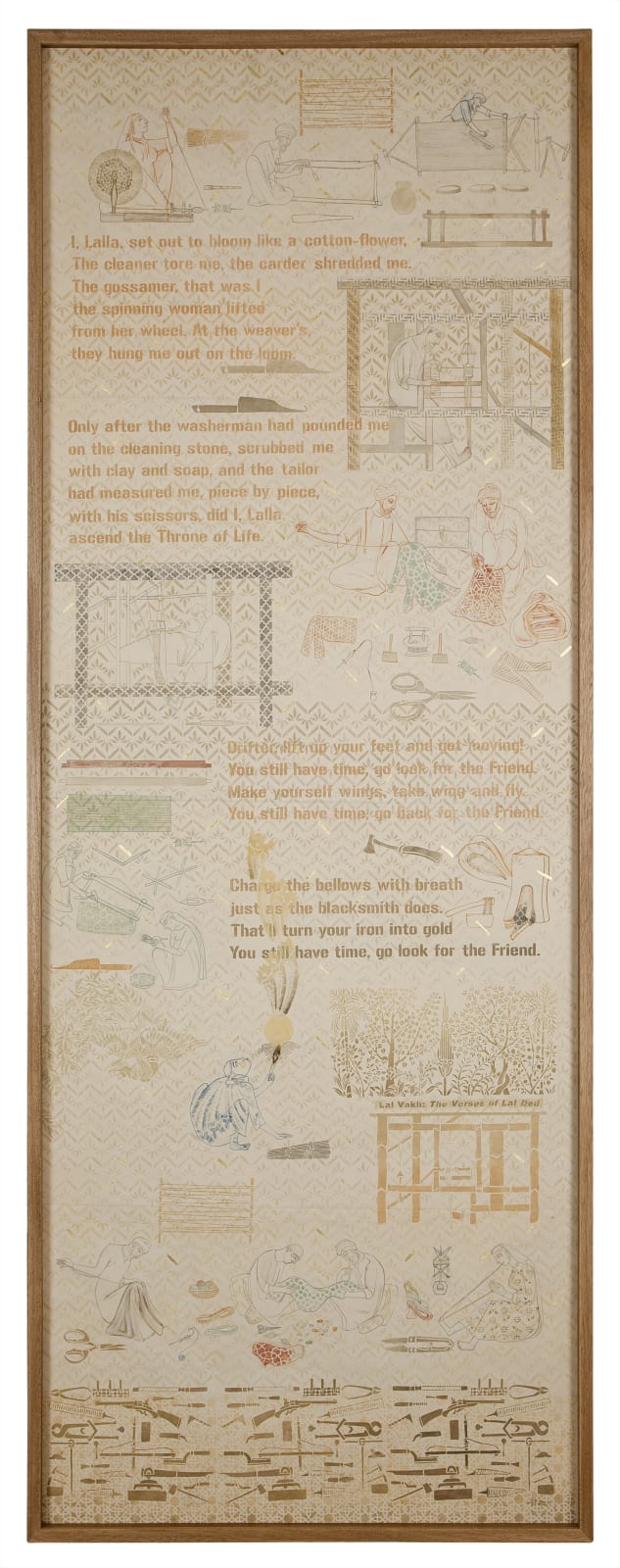Nilima Sheikh Indian, b. 1945
Rozgar Series, 2011
Brush drawing & stencil printing with casein tempera & gold leaf on Vasli paper
Copyright The Artist
Further images
This series ( Rozgar 1-4 & studies for Rozgar) raises the question of resignifying the typifications of a regional / colonial archive. How is the dictionary of colonial possesions to...
This series ( Rozgar 1-4 & studies for Rozgar) raises the question of resignifying the typifications of a regional / colonial archive. How is the dictionary of colonial possesions to be reannotated if artisanal tasks shape and align the body so closely to repeated actions (carding, spinning, weaving, stitching) that it acquires a perpetual shape, posture, gait and rhythm, has no other orientation or habitus.
The haze of gold in Rozgar 1-4 seems to signify a dream of labour, imbues it with stillness and a staying power, makes it a repository of situational affects for the viewer. The quoted typification creates a dissonance that resists resignification and asks instead: is the labouring body also a desiring body or the figure of another’s desire ?
The handpainted or stencilled artisanal patterns and stylized motifs that recur prismatically in Nilima’s work, especially from the late 1990’s have a transregional refferent in the vegetal and geometric ornament of architecture, folio painting and block printed textiles or pottery in which the artisanal stencil joined early commerce to later bazaar aesthetics, and indexes the gendered tension between domestic craftwork by women and the more male bazaar form.
The haze of gold in Rozgar 1-4 seems to signify a dream of labour, imbues it with stillness and a staying power, makes it a repository of situational affects for the viewer. The quoted typification creates a dissonance that resists resignification and asks instead: is the labouring body also a desiring body or the figure of another’s desire ?
The handpainted or stencilled artisanal patterns and stylized motifs that recur prismatically in Nilima’s work, especially from the late 1990’s have a transregional refferent in the vegetal and geometric ornament of architecture, folio painting and block printed textiles or pottery in which the artisanal stencil joined early commerce to later bazaar aesthetics, and indexes the gendered tension between domestic craftwork by women and the more male bazaar form.
1
of
9











